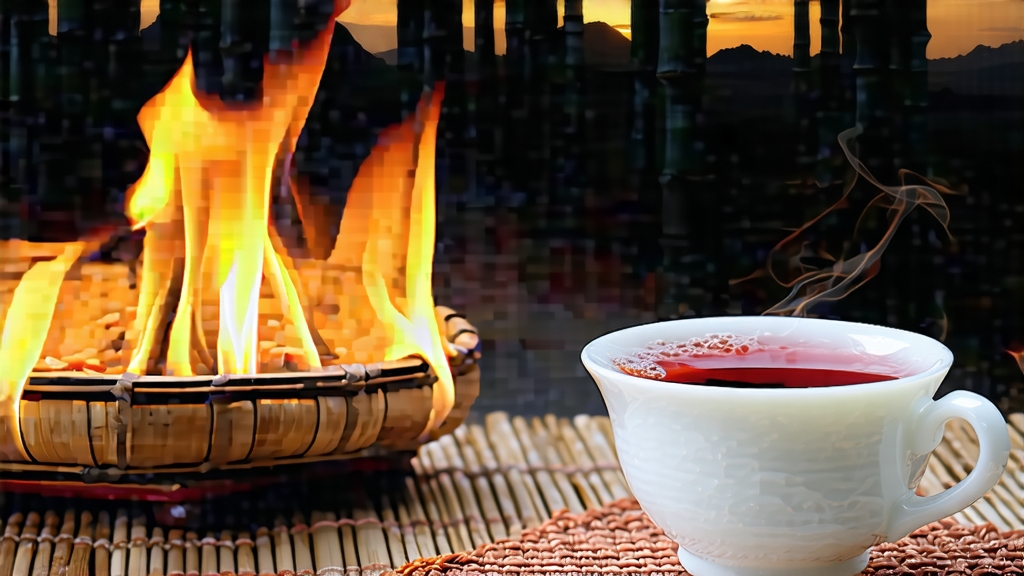
Long before Assam, Ceylon, or Earl Grey ever appeared on London breakfast tables, a small village in the Wuyi Mountains of northern Fujian province was already sending out the first aromatic signals of what the West would later call “black tea.” That village is Tongmu, and the tea is Lapsang Souchong—today celebrated as the progenitor of every black tea on earth. To understand Lapsang Souchong is to hold a living time-capsule of Chinese craft, trade, and taste: a tea that smells of campfire and pine resin, yet sips like velvet wine laced with longan and malt.
History: From Mountain Refuge to Global Sensation
The accepted origin story begins around 1568, late in the Ming dynasty, when a band of soldiers allegedly commandeered a tea factory overnight, forcing farmers to rush their withering leaves over open pine fires so the crop would not spoil. The accidental smoke infusion proved wildly popular with Dutch traders at the port of Xiamen, who bought every chest and shipped it to Europe as “bohea,” a corruption of “Wuyi.” By the early 1600s Amsterdam coffeehouses were already advertising “Thee van Bohea,” and by the late 1660s the British East India Company had made it the first black tea ever legally imported into London. When Queen Catherine of Braganza introduced tea to the English court, the fragrance curling from her porcelain was almost certainly Lapsang Souchong. Thus, a tea born of military urgency became the emblem of civilized leisure half a world away.
Terroir: Why Only Tongmu Can Birth the Original
Tongmu lies inside a national nature reserve at 27° N latitude, where the Min River cuts a misty gorge through granite cliffs. Day-night temperature swings of 15 °C force the indigenous Xiao Ye Zhong (small-leaf) cultivar to develop extra polyphenols and aromatic oils. The soil is a stony, well-drained laterite rich in iron and potassium, while the average humidity hovers at 85 %. Crucially, the reserve is closed to outsiders; only about 150 households still hold permits to produce tea inside the core 60 km². Any leaf picked outside this micro-zone may be called “smoked black tea,” but it may not bear the protected name “Zheng Shan Xiao Zhong,” the official Chinese designation for authentic Lapsang Souchong.
Two Faces of the Same Leaf: Traditional Smoke vs. Modern “Unsmoked”
International drinkers usually picture Lapsang Souchong as a tarry, campfire brew, yet within China the most prized versions are delicate, honey-sweet, and entirely unsmoked. The divergence is intentional.
-
Traditional Pine-Smoked Zheng Shan Xiao Zhong
Fresh leaves undergo 8–10 hours of withering in upper-floor lofts heated by gentle pine embers. Rolling follows, then 3–4 hours of oxidation until the leaf edge turns chestnut. Finally the tea is pan-fired and re-roasted over resinous Masson pine logs for up to eight cycles. The smoke bonds with the leaf’s tannins, creating guaiacol and syringol—molecules responsible for the signature pine and bacon notes. -
Contemporary “Unsmoked” or “Original Aroma” Style
Developed in 2005 for the domestic luxury market, this version omits final pine roasting. Instead, the leaf is baked at 70 °C over charcoal made from local hardwood. The result is a burgundy-colored liquor tasting of dried longan, cocoa, and a whisper of narcissus—closer to a fine Burgundy Pinot than to a Scotch whisky. Both styles share the same cultivar and oxidation parameters; only the finishing fire differs.
Craftsmanship in Detail: A Day Inside Tongmu
Pickers set out at 5 a.m. when dew still weighs down the tender two-leaf-and-a-bud sets. By 7 a.m. the first bamboo baskets arrive at the three-story wooden factory. Withering racks built from woven reed mats are suspended above tiled stoves where pine logs smolder at 40 °C. Masters judge moisture loss not with instruments but by the sound of a leaf crumpled against the ear: a soft, almost musical crackle means 60 % water remains, the perfect moment for rolling. Oxidation trays